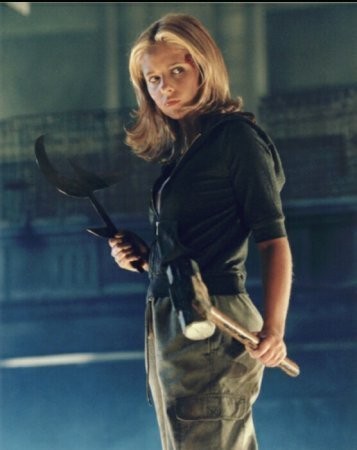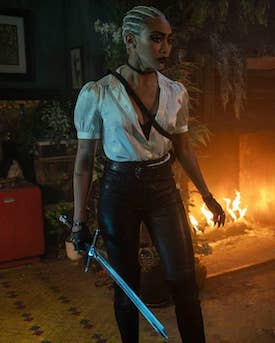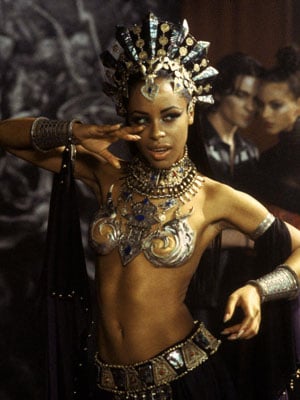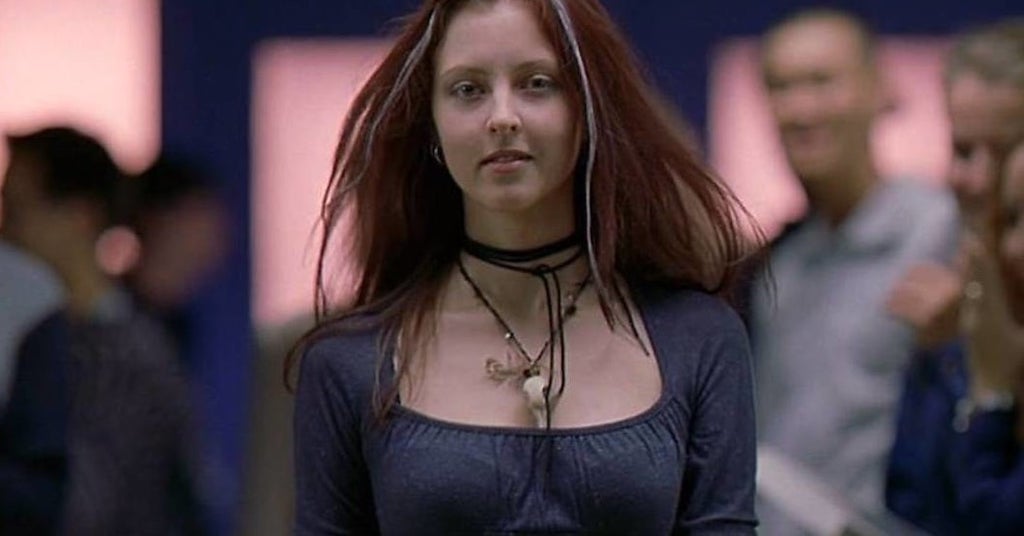Does She Make You Scream? Introducing the Murder Babe, the Final Girl’s Opposite Number
In the landscape of horror, women occupy many roles, but none quite as famous as the final girl. The one to outlast them all. Dating back to 1974 and coined by Carol J. Clover in her 1992 book Men, Women, and Chain Saws, final girls exemplify the untarnished light that is innocence. But what about the flip side to the final girl? I’m talking about the women in the horror films that live for the slice of blade through air and skin. The ones who have been haunting our screens, pages, and nightmares since the 1800s.
Murder babes: those who revel in and excel at the art of murder and mayhem. A type of villainess, the murder babe works and lives in the darkness. She has made it her home, usually because there is no other place that accepts her for who she is. It’s arguable that murder babes aren’t born that way but rather make or find their dark calling and cling to it like a succubus, much as the final girl never goes into the story knowing her role.

Except murder babes aren’t stuck being solely evil. Yes, the Devil may ride shotgun to these women, but he doesn’t call the shots. Murder babes are multifaceted characters who can be both good and evil and everything in the grey in-between.
In some regards, Buffy Summers from Buffy the Vampire Slayer can be considered a murder babe. She is, by definition, a killer, someone who must exist in the dark and has darkness embedded inside her very makeup because that’s the way slayer magic works. But Buffy isn’t evil—slayers aren’t evil, most of them, at least not in the Machiavellian sense where there is this murky evil down there and that great goodness up there. But compare her to another murder babe, The Butcher from American Horror Story: someone who like Buffy, believes herself a champion, and though both walk the path of blood, only one can be considered good in the conventional sense.
Unlike final girls, who make a point of being good, of rejecting evil in light of all the death and pain that it brings, murder babes seem not to choose to adhere to or even see those lines or borders. There is only devotion, commitment, and the values they hold dear, which usually ends up being familial. Chilling Adventures of Sabrina’s Prudence Blackwood, for example, is a worker of the dark arts and lover of all things Satanic and wicked. She doesn’t let that ever get in the way of her commitment. She never chooses the evil act because it is simply evil but because it feeds into the things that she values: her dark lord, her sisters, and her craft.

Like Prudence Blackwood, Nancy Downs of The Craft swears her allegiance to her sisters and her lord. However, Downs shows the sometimes-conflicted nature of a murder babe, of someone who lets the dark abyss in to love her. Yes, she stands up for her coven, pays dues to Manon, but she eventually stops doing it because of the love of the craft or magic. Though she uses her powers throughout the movie to help her coven, she also uses it to harm and control them. Unfortunately, not every murder babe can walk the blood-soaked line between destroying others and self-destruction.
When talking about murder babes, personally, I’d be absolutely slain if I didn’t mention Ginger and Brigitte Fitzgerald from the Ginger Snaps movies. I saw the original movie when I was eleven, and Ginger was the first murder babe I remember ever meeting. I’d seen final girls and thought, awesome, yeah, girls kick ass and rock and are all good and gravy. Then the Fitzgerald sisters showed me that good and bad aren’t necessarily opposing forces but can be closely related. And the old tropes of what women can be in life and in horror are being killed and buried in the backyard.
While Ginger is atypical murder babe, her sister Brigitte is a true final girl. She is the one who fights and stays vigilant against the encroaching darkness throughout the first movie until she is forced to stand against her werewolf sister. At the end of the first movie, Brigitte melds her blood with Ginger’s tainted blood, marking their forever bond, but the movie’s message and metaphor stretches deeper as the series goes on, and Brigitte realizes that there is no stopping change, transformation, the dying of the old to make way for the new. The prequel and sequel, though not as great as the first, continue the metaphor to its end.

Ginger Snaps perfectly encapsulates both tropes and characters throughout the series. It’s only fitting that the end to both the sequel and prequel sees the murder babe and final girl not dying but transforming. The end of the final girl and murder babe tropes are happening. Women in horror don’t have to be good or evil or champions or anything other than people trying their darndest to survive in a world gone sick with blood.
And because I love murder babes so much, I thought I’d include a few other murder babe favorites of mine:
- Queen Akasha: Admittedly, I never read Queen of the Damned or The Vampire Lestat by Anne Rice. So to me, the only Akasha to pay blood allegiance to is Aaliyah’s Akasha from the very emo and goth 2002 movie adaptation. Akasha is a murder babe whose own kin is afraid of her because they know the depths of her hunger. Akasha’s thirst for blood knows no bounds. She feeds. She devours. She drinks her fill and leaves the world half-dry in her wake.
- Mater Suspiriorum, the Mother of Sighs: Very rarely do horror movies make me cry. Even rarer yet is when a murder babe makes me cry. Luca Guadagnino’s 2018 Suspiria made me feel A LOT of things, most of which were confusing and hard to articulate. What I can manage to piece together is that the pain and power of magic and conducting of the body is beautifully rendered across the screen, never more breathtaking and bloody than in the final scene and ultimate reveal, where we get to see the Mother of Sighs commanding her coven to a dance of the dead.
- Tiffany Valentine: I’m a 90s kid, so my first introduction to Chucky that I can remember wasn’t in 1988’s Child’s Play but in the film that came out a decade later, Bride of Chucky. Tiffany’s love for Chucky/Charles drives her to bring him back, but her love for him has nothing to do with her cruelty–that’s her own. There is something uniquely terrifying about a woman who loves darkness so much she marries it and then later has a child with it.
Who are your favorite murder babes? Let us know in the comments!




LOVE this trope! Thank you for writing, researching & sharing!